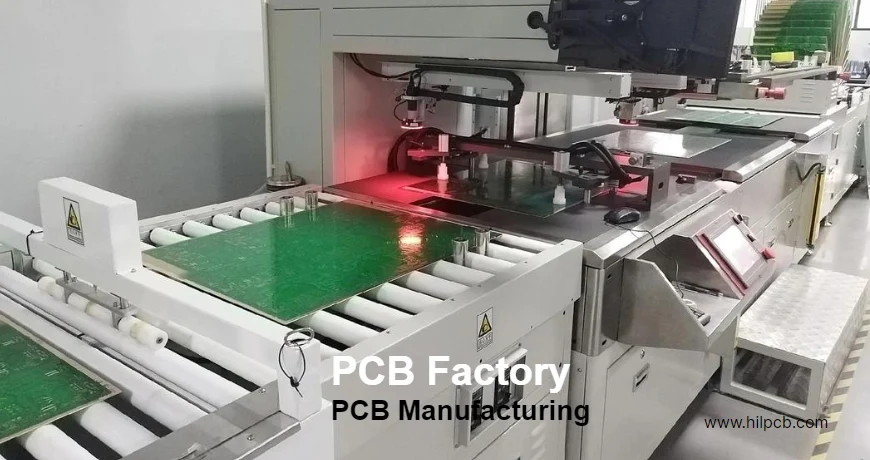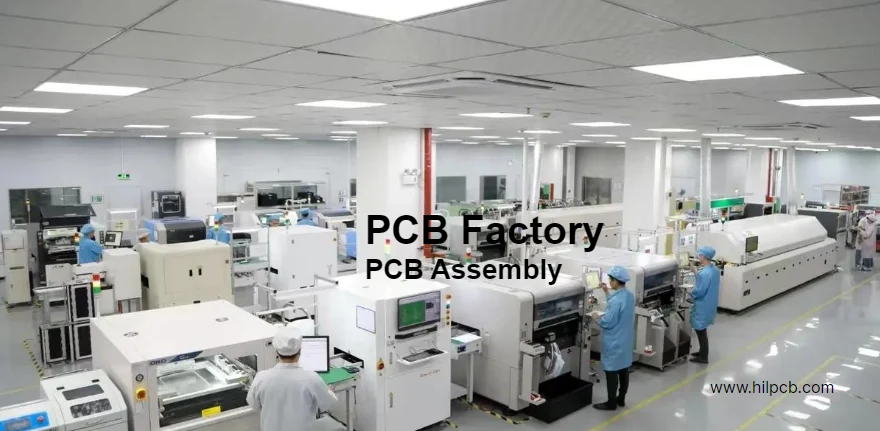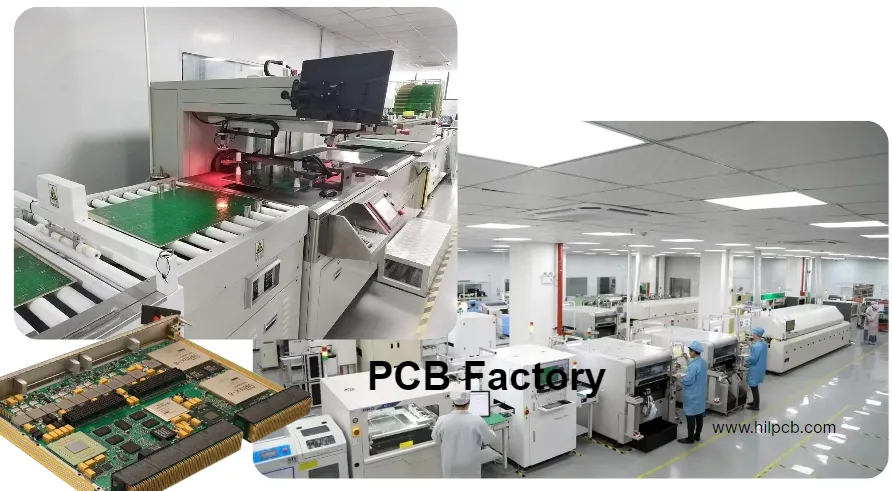Walk into two different PCB factories and witness dramatically different operations. Modern facilities feature climate-controlled environments, laser direct imaging systems, automated production lines, and real-time quality monitoring. Basic shops show aging equipment, manual processes, inconsistent quality, and minimal testing. Both claim "professional PCB factory" capabilities, yet their actual performance differs enormously.
A professional PCB factory represents more than equipment collection. It integrates advanced manufacturing technology, environmental controls, quality systems, skilled workforce, and continuous improvement culture. Factory operational maturity determines whether boards meet specifications consistently or quality varies randomly batch-to-batch.
Highleap PCB Factory (HILPCB) operates a modern China PCB factory with advanced equipment (LDI imaging, laser drilling, automated AOI/testing), climate-controlled production areas, ISO 9001/AS9100/ISO 13485 certified quality systems, and experienced technical staff delivering consistent results from PCB Prototyping through PCB Production volumes.
Manufacturing Equipment & Technology
Equipment sophistication and maintenance condition indicate capability range and process maturity across all PCB Manufacturing operations.
Advanced Imaging Systems:
- Laser Direct Imaging (LDI): Computer-controlled lasers write 2mil traces directly onto photoresist
- Film-based exposure: Traditional method for standard geometries where applicable
- Automated registration: Vision systems locate targets with ±25µm accuracy
- AOI scanning: High-resolution cameras inspect every layer for defects
Drilling & Via Formation:
- Multi-spindle CNC drilling: 0.15mm minimum diameter, ±25µm positional accuracy
- Laser drilling systems: CO2 for standard microvias (50-150µm), UV for finer features
- Controlled depth drilling: Creates buried vias in multilayer boards
- Back-drilling capability: Removes via stubs for high-speed designs
- Tool management: Automated monitoring prevents worn-bit defects
Plating & Surface Finish:
- Automated plating lines: Computer-controlled current density, chemistry monitoring
- Horizontal plating: Ensures uniform copper distribution
- Surface finish options: ENIG, immersion silver, OSP, immersion tin, HASL
- Thickness measurement: Real-time verification maintains specifications
Lamination Equipment:
- Vacuum lamination presses: Multiple openings with precise pressure/temperature control
- Sequential lamination: For HDI and rigid-flex constructions
- Material-specific profiles: Optimized for Rogers, polyimide, standard FR4
- Registration pins: Precision-machined tooling maintains layer alignment
Testing & Inspection:
- Flying probe testers: 100% electrical verification without fixture costs
- Fixture testers: High-speed production testing with bed-of-nails
- Impedance testing: TDR/VNA systems verify controlled impedance ±3-5Ω
- X-ray inspection: BGA verification, buried via quality, layer registration
- AOI systems: Multiple inspection points throughout production flow

Environmental Control & Clean Room Standards
Manufacturing environment directly affects process consistency and product quality for our PCB Fabrication and PCB Assembly operations.
Climate Control Systems:
- Temperature regulation: 22±2°C throughout fabrication areas
- Humidity control: 45-55% RH for dimensional stability
- Continuous monitoring: Data logging with alarm systems
- Material storage: Climate-controlled rooms prevent moisture absorption
Contamination Control:
- HEPA filtration: Reduces particle contamination in critical areas
- Clean room zones: Class 10,000 or better for sensitive processes
- ESD protection: Grounded workstations, wrist straps, ionizers throughout facility
- Air showers: Personnel pass through before entering clean areas
Chemical & Waste Management:
- Proper storage: Containment and labeling per safety regulations
- Waste treatment: On-site treatment systems or contracted disposal
- Safety systems: Ventilation, eyewash stations, spill containment
- Environmental compliance: Permits and adherence to local regulations
Material Management:
- Inventory tracking: Computerized systems manage laminate materials, copper foil, chemicals
- Lot traceability: Material batch numbers recorded for investigation
- FIFO rotation: First-in-first-out prevents material aging issues
- Supplier relationships: Direct connections with Rogers, Isola, Panasonic, Nelco
Our comprehensive PCB Services infrastructure ensures optimal environmental conditions throughout the manufacturing process.
Quality Management Infrastructure
Quality systems separate mature factories from operations relying solely on final inspection across all aspects of being a professional PCB Manufacturer.
Statistical Process Control (SPC):
- Real-time monitoring: Trace width, copper thickness, registration accuracy tracked continuously
- Control charts: Display variation trends, trigger investigation before specs exceeded
- Automated alerts: Out-of-control conditions prompt immediate action
- Data collection: Automated measurement eliminates transcription errors
Multi-Stage Inspection:
- AOI after etching: Scans inner layers for shorts, opens, trace defects
- Dimensional verification: Measures critical dimensions, hole locations
- Visual inspection: Magnified examination under proper lighting
- Final inspection: Comprehensive check before packaging
Testing Protocols:
- Electrical testing: 100% or validated statistical sampling
- Impedance verification: TDR measurements on production coupons or actual boards
- Microsection analysis: Periodic destructive testing validates plating quality
- Environmental testing: Temperature cycling, thermal shock for critical applications
Documentation Systems:
- Production travelers: Record process parameters for each lot
- Non-conformance reporting: Systematic defect documentation and corrective action
- First article reports: Comprehensive validation of initial production
- Test data packages: Electrical results, impedance measurements, dimensional reports
- Material traceability: Links finished boards to specific material batches

Workforce Capability & Training
Equipment requires skilled operators to function effectively. Workforce capability translates theoretical capacity into actual performance for delivering comprehensive PCB Design support and manufacturing excellence.
Operator Training Programs:
- Structured onboarding: Formal training for new employees
- IPC certification: Workmanship standards training (IPC-A-600, IPC-A-610)
- Process-specific training: Equipment operation, quality standards, troubleshooting
- Continuous education: Ongoing training on new processes and technologies
Quality Consciousness:
- Defect recognition: Operators trained to identify potential issues
- Statistical process control education: Understanding variation and control limits
- Root cause analysis participation: Involvement in problem-solving
- Quality culture: Organizational emphasis on prevention over detection
Engineering & Technical Staff:
- DFM expertise: Engineers understand design requirements and manufacturing constraints
- Material knowledge: Deep understanding of substrate properties and processing
- Process development: Capability to develop parameters for new materials or constructions
- Customer collaboration: Effective communication with design teams
Problem-Solving Capability:
- Failure analysis: Investigation of defects and field failures
- Process troubleshooting: Rapid diagnosis and correction of manufacturing issues
- Yield improvement: Systematic reduction of defect rates
- Innovation: Development of improved processes or capabilities
Production Efficiency & Capacity Management
Manufacturing capability means little without reliable delivery. Operational efficiency and capacity planning determine schedule reliability for our PCB Company operations.
Production Planning:
- Load balancing: Distributes work across available equipment
- Bottleneck identification: Understands capacity constraints
- Equipment utilization: Maximizes productive use of capital equipment
- Flexibility: Adjusts to changing demand patterns
Material Requirements Planning:
- Demand forecasting: Anticipates needs based on order pipeline
- Lead time management: Accounts for material procurement schedules
- Safety stock: Maintains buffer inventory for common materials
- Supplier coordination: Communicates forecasts to material suppliers
On-Time Delivery Performance:
- Realistic scheduling: Commitments based on capacity and material availability
- Proactive communication: Early warning if delays anticipated
- Expedite capability: Can prioritize urgent requirements when necessary
- Performance tracking: Historical on-time delivery percentage monitoring
Continuous Improvement:
- Cycle time reduction: Ongoing efforts to reduce manufacturing lead times
- Yield improvement: Higher first-pass yield reduces effective lead time
- Process optimization: Eliminates non-value-added steps
- Lean manufacturing: Principles applied to reduce waste and improve flow
HILPCB Factory Excellence
Modern Manufacturing Facility:
- Advanced equipment: LDI imaging, laser drilling (CO2/UV), automated plating lines
- Climate control: Temperature/humidity regulated fabrication areas
- Clean room assembly: Contamination-controlled zones for sensitive processes
- Comprehensive testing: Flying probe, fixture, impedance (TDR/VNA), X-ray
Production Capabilities:
- 2-64 layer capability with sequential lamination
- Line width/space: 2/2mil minimum (HDI), 3/3mil standard
- All materials: FR4 to Rogers/Taconic to ceramics, metal core
- HDI, rigid-flex, heavy copper, specialty constructions
Quality Systems:
- ISO 9001:2015, AS9100, ISO 13485, IATF 16949 certified
- Statistical process control on critical parameters
- Multi-stage AOI and inspection
- Full traceability and documentation
Skilled Workforce:
- IPC-certified inspectors and assemblers
- Experienced process engineers
- Trained operators on all equipment
- Technical support staff for customer collaboration
Operational Excellence:
95% first-pass yield for established blog
98% on-time delivery performance
- Flexible capacity: prototype to high-volume
- Integrated assembly services available
From advanced equipment to skilled workforce, climate control to quality systems, HILPCB factory operations deliver the capability and reliability that critical applications require. Our comprehensive PCB Solutions approach ensures that every aspect of factory operations supports customer success.
Frequently Asked Questions
Q1: What should I look for during a PCB factory tour or virtual inspection? Examine equipment age and maintenance condition (modern, well-maintained machines indicate investment). Observe cleanliness and organization (professional factories maintain orderly operations). Check environmental controls (temperature/humidity monitoring). Look at quality inspection stations (AOI, electrical testers, impedance measurement). Ask about workforce (training programs, IPC certifications, experience levels). Evaluate documentation systems (computerized vs paper-based).
Q2: How important is factory location when choosing a PCB manufacturer? Location affects lead time, communication, and audit accessibility. China factories offer cost advantages (30-60%) but require shipping time. Domestic factories enable faster prototyping and easier communication. For development projects needing rapid iteration, proximity matters. For production with stable designs, China costs often justify longer lead times. Consider total value including communication quality and problem resolution speed, not just price.
Q3: Can small PCB factories produce same quality as large facilities? Factory size doesn't automatically determine quality—process control and expertise matter more. Small specialized factories often excel at complex, low-volume work requiring engineering attention. Large factories optimize for volume efficiency but may provide less flexibility. Evaluate specific capabilities: equipment sophistication, quality systems, workforce expertise, material handling. Well-managed small factories can outperform poorly-controlled large facilities.
Q4: What certifications should a professional PCB factory have? ISO 9001:2015 baseline for quality management. IPC compliance (IPC-A-600, IPC-6012) for workmanship. Industry-specific: AS9100 for aerospace, ISO 13485 for medical, IATF 16949 for automotive, UL for safety-critical blog. However, certificates alone don't guarantee quality—verify implementation through facility audits and production documentation review.

